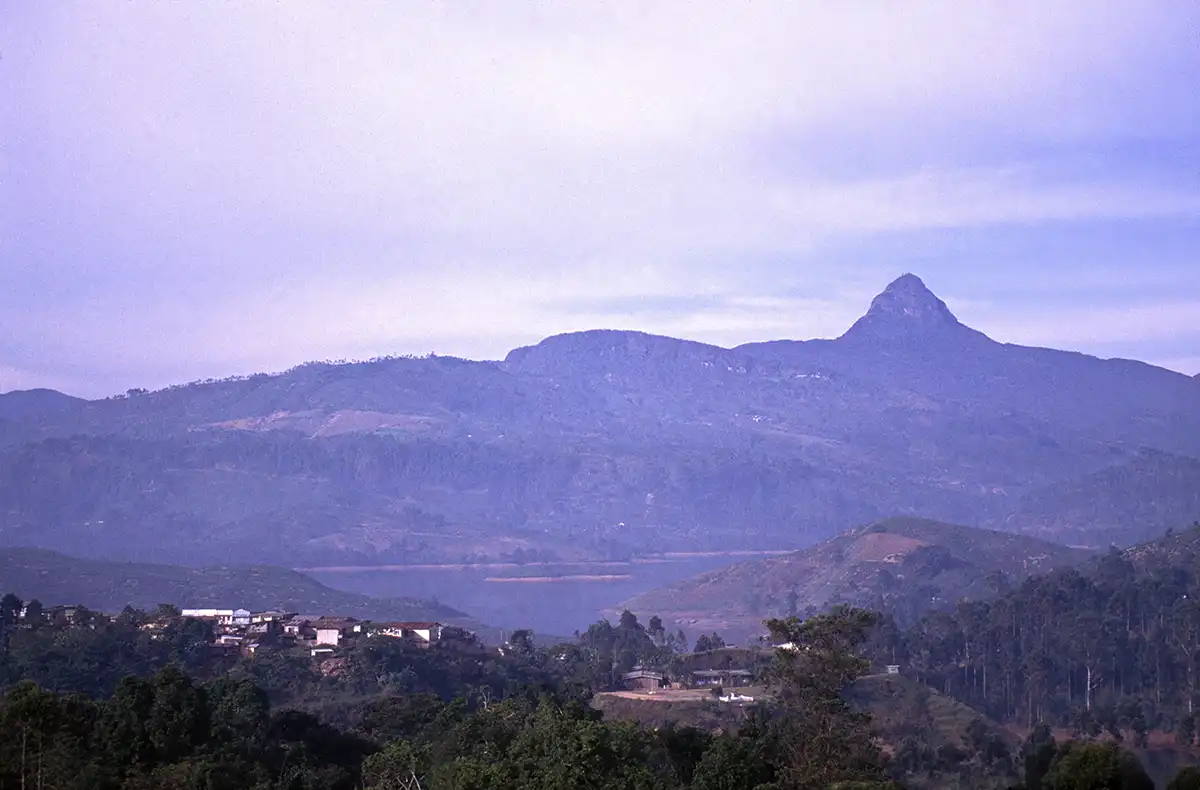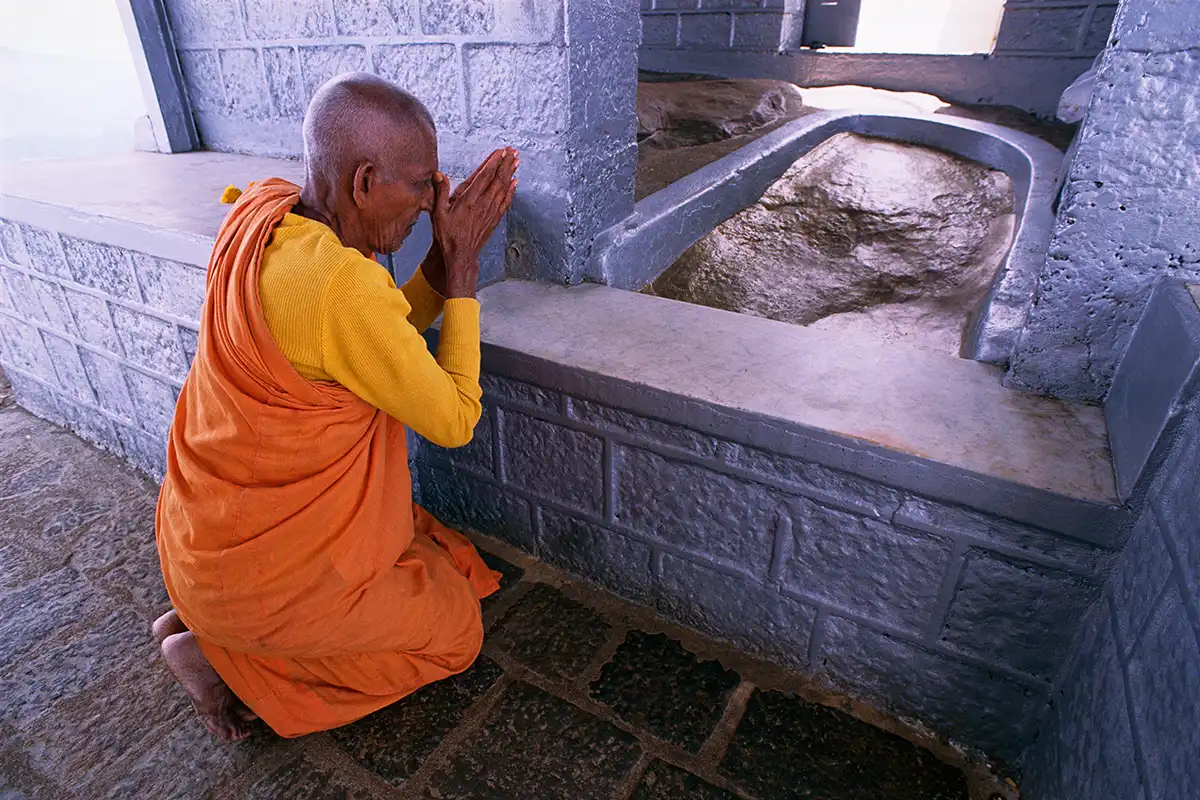Adam's Peak
Jutting sharply skyward from the lush jungles of southwestern Sri Lanka is the 7362-foot (2243-meter) peak of Sri Pada, the 'Holy Footprint.' Also called Adam's Peak, the mountain has the unique distinction of being sacred to the followers of four of the world's major religions: Hinduism, Buddhism, Christianity, and Islam. Long before the development of these religions, however, the mountain was worshipped by the aboriginal inhabitants of Sri Lanka, the Veddas. Their name for the peak was Samanala Kanda; Saman was one of the four guardian deities on the island. For Hindus, the mountain's name is Sivan Adi Padham because it was the world-creative dance of the god Shiva that left the giant footprint (5 feet 7 inches by 2 feet 6 inches).
According to Buddhist traditions from as early as 300 BC, the print is beneath this larger marking. Imprinted on a giant sapphire, the Buddha left it during the third and final of his legendary visits to Sri Lanka. When Portuguese Christians came to the island in the 16th century, they claimed the impression to be the footprint of St. Thomas, who, according to legend, first brought Christianity to Sri Lanka. And finally, the Arabs record it as being the solitary footprint of Adam, where he stood for a thousand years of penance on one foot. An Arab tradition tells that when Adam was expelled from heaven, God put him on the peak to make the shock less terrible - Ceylon being that place on earth closest to and most like heaven.
The mountain is more easily seen from the sea than from land and more impressive. Early Arab seafarers were fascinated with the pyramidal peak and wrote of it as "the highest mountain in the world" (it is not even the highest in Sri Lanka) and "visible from three days sail." The ancient Sinhalese also believed it to be of great height, and a native legend says, "From Seyllan to Paradise is forty miles, and the sound of the fountains of Paradise is heard here." Visited by many early world travelers, among them the Arab Ibn Batuta (1304-1368) and the Venetian Marco Polo (1254-1324), Adam's Peak attained a legendary status as a mystic pilgrimage destination.
Today, the pilgrimage season commences in December and continues until the beginning of the monsoon rains in April (from May to October, the mountain is often obscured by clouds). Certain parts of the path leading up the mountain are extremely steep, and the climbing chains secured in these sections are said to have been placed by Alexander the Great (365-323 BC), though there is no evidence that he made it this far south on his Asia travels. Atop the Peak is an oblong platform (74 x 24 feet) where stands a small Buddhist temple and the shrine of Saman with a strange footprint. Votive offerings are made here, especially of a coil of silver, as long as the donor is tall, for recovery from sickness, and rainwater taken from the footprint is known to have healing power. Adam's Peak is also called Samanalakande or the 'butterfly mountain' because of the myriads of small butterflies that fly from all over the island to die upon the sacred mountain.

Martin Gray is a cultural anthropologist, writer and photographer specializing in the study of pilgrimage traditions and sacred sites around the world. During a 40 year period he has visited more than 2000 pilgrimage places in 160 countries. The World Pilgrimage Guide at sacredsites.com is the most comprehensive source of information on this subject.


